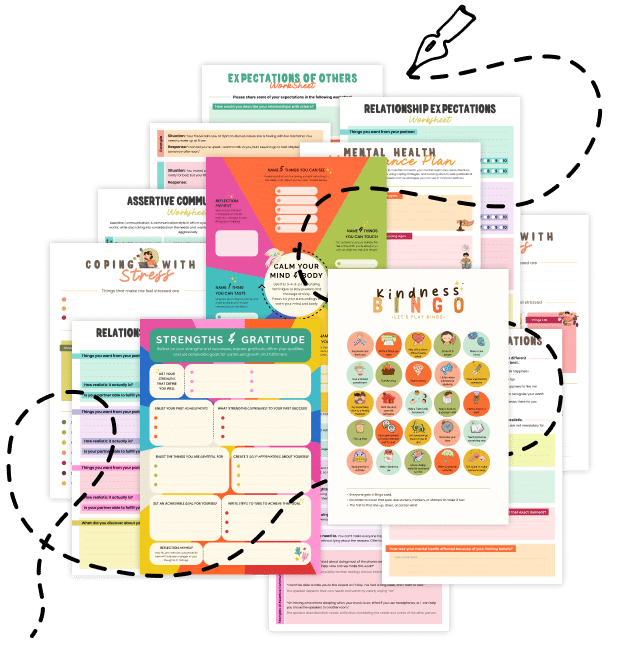20 Things You Should Know About Paradoxical Intention
Explore Paradoxical Intention—a counterintuitive technique to overcome anxiety and performance pressure. Discover 20 key insights, practical tips, and applications to help you break free from self-imposed constraints.
1. What Is Paradoxical Intention?
Paradoxical Intention is a therapeutic technique where you intentionally engage in or exaggerate the very behavior you fear. It’s often used to reduce anxiety and performance pressure by removing the struggle against what you dread.
2. The Core Principle of Paradoxical Intention
Instead of trying to avoid a problem (e.g., insomnia or anxiety), you deliberately confront it head-on—often by trying to make it happen. This reversal can diminish the fear associated with the behavior.
3. Origins in Therapy
Developed within the framework of logotherapy by Viktor Frankl and popularized in various behavioral therapies, paradoxical intention is designed to help break the cycle of anticipatory anxiety.
4. How Paradoxical Intention Works
When you intentionally provoke the feared behavior, you remove the pressure of “trying not to” do it. This counterintuitive approach can lead to a reduction in anxiety, as the fear loses its power over you.
5. Application in Insomnia
One common use of paradoxical intention is in treating insomnia. Instead of struggling to fall asleep, individuals are encouraged to try staying awake. This shift often alleviates performance anxiety and paradoxically leads to sleep.
6. Reducing Performance Anxiety
By intentionally “wishing” for failure or imperfection, you may reduce the overconcern that prevents you from performing well. This strategy is particularly useful in scenarios where fear of failure is paralyzing.
7. Breaking the Vicious Cycle
Paradoxical intention helps break the vicious cycle where fear intensifies itself. When you stop resisting and instead embrace the feared behavior, the intensity of the fear often diminishes.
8. Shifting Focus from Outcome to Process
This technique encourages you to focus on the act itself rather than the outcome. By letting go of the need to be perfect, you can reduce self-imposed pressure and foster a more relaxed state of mind.
9. Cognitive Reframing
Paradoxical intention is a powerful form of cognitive reframing. It challenges your preconceptions by flipping the narrative—from “I must not do this” to “I will do this—and that’s okay.”
10. Enhancing Self-Awareness
Engaging in paradoxical intention requires self-awareness. By monitoring your reactions as you deliberately engage in a feared behavior, you gain insights into your anxiety triggers and thought patterns.
11. Practical Exercise: Sleep Challenge
If you struggle with insomnia, try lying in bed and intentionally staying awake. Observe how the pressure to fall asleep decreases, which may, in turn, make sleep come more naturally.
12. Embracing Imperfection
Paradoxical intention teaches you to embrace imperfection. When you allow yourself to fail or perform suboptimally without judgment, you often find that the fear of failure diminishes.
13. Applications Beyond Sleep
This technique isn’t limited to insomnia. It can also be applied to public speaking, test anxiety, and even creative blocks—essentially any situation where performance anxiety is a barrier.
14. The Role of Humor
Humor often emerges when you use paradoxical intention. Laughing at the absurdity of trying too hard not to do something can lighten the mood and lower stress levels.
15. Limitations and Considerations
While paradoxical intention can be effective, it may not work for everyone or every situation. It’s most useful when the anxiety is tied to performance pressure rather than deep-seated trauma.
16. Combining with Other Techniques
For best results, use paradoxical intention in conjunction with other therapeutic approaches like mindfulness, relaxation techniques, or cognitive-behavioral strategies to create a comprehensive anxiety management plan.
17. Overcoming Resistance
The idea of intentionally provoking what you fear may seem counterintuitive and uncomfortable at first. With practice and gradual exposure, the resistance typically diminishes.
18. Tracking Progress
Keep a journal to record your experiences with paradoxical intention. Note any changes in your anxiety levels, sleep patterns, or performance. Tracking progress can reinforce positive changes and highlight what works best for you.
19. Seeking Professional Guidance
For individuals with severe anxiety or other mental health concerns, working with a therapist experienced in paradoxical intention and related methods can be invaluable in safely implementing the technique.
20. Related Topics to Explore
- Cognitive Defusion: Techniques to detach from unhelpful thoughts.
- Self-Talk Restructuring: Transforming negative internal dialogue into constructive messages.
- Adaptive Confidence: Building realistic self-assurance by overcoming fear.
- Exposure Therapy: Gradually facing fears to reduce anxiety.
Quick Tips for Implementing Paradoxical Intention
- Start Small: Choose a low-stakes situation to practice the technique, like a minor task that triggers mild anxiety.
- Embrace the Irony: Accept that intentionally provoking a fear is a method to reduce its hold over you.
- Practice Regularly: Incorporate paradoxical intention into your routine to gradually desensitize your fear.
- Reflect on the Experience: Journal your thoughts and feelings to monitor progress and insights.
- Combine with Relaxation: Use deep breathing or mindfulness to stay calm while you intentionally engage in the behavior.
Paradoxical Intention offers a unique and counterintuitive way to overcome anxiety and performance pressure. By intentionally engaging in what you fear, you dismantle the cycle of anxiety, shift your focus from outcomes to processes, and ultimately empower yourself to embrace imperfections. Whether it’s for sleep, public speaking, or any area where fear holds you back, paradoxical intention can be a transformative tool for reducing anxiety and enhancing performance.
Share this article with anyone looking to break free from performance anxiety or overcome the barriers that hold them back. Embrace the paradox, and discover a fresh path to confidence and calm!

